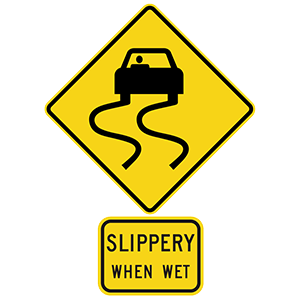2025 Connecticut Permit Test 19
The following questions are from real DMV written tests. These are some of the actual permit questions you will face in Connecticut. Each permit practice test question has three answer choices. Select one answer for each question and select "grade this section." You can find this button at the bottom of the drivers license quiz. For a complete list of questions and answers for Connecticut please visit https://cheat-sheets.dmv-written-test.com/en/connecticut/car.
Number of Tests
Number of Question
Passing Score
17. When you are behind a motorcycle, you should:
Explanation
When following a motorcyclist, allow for at least a three- to four-second following distance. Motorcycles can stop quickly and following them too closely endangers your life and that of the motorcyclist. If the motorcyclist should fall, you need extra distance to avoid the rider. The chances of a fall are greatest on wet and icy roads, gravel roads, and metal surfaces such as bridges, gratings, and streetcar or railroad tracks.
18. Water on the road can cause a vehicle to hydroplane. Your car may hydroplane at speeds as low as:
Explanation
Hydroplaning occurs when there is standing water on a roadway. At speeds up to 35 mph, most tires will channel water away from the tire. As your speed increases past 35 mph, tires cannot channel the water as well and your tires may start to lose contact with the road and ride over the water like a set of water skis.
19. You enter a designated turn lane to make a left turn at an upcoming intersection. There is oncoming traffic. You should:
Explanation
When making a left turn, you should always begin signaling about 100 feet before the turn. You should keep your front wheels aiming straight ahead until it is safe to start your turn. This ensures that you will not be pushed into oncoming traffic if another vehicle hits you from behind.
20. You should not make sudden stops in front of large trucks and buses because:
Explanation
Large vehicles require longer distances to stop and accelerate than smaller vehicles do. Making a sudden stop in front of a large vehicle is dangerous because the other driver may not be able to stop in time to avoid a collision.
21. When backing up:
Explanation
When backing up, place your right arm on the back of the passenger seat and look directly through the rear window. Do not depend on your rearview or side mirrors as mirrors do not show directly behind your vehicle. Only drive in reverse at a low speed.
22. You are coming to an intersection with a flashing red light. You should:
Explanation
A flashing red traffic light means the same thing as a stop sign. You must come to a complete stop, yield to other traffic and pedestrians, and then proceed when it safe to do so.
23. In rainy weather, you should be most careful when turning or stopping:
Explanation
You should be extra careful when turning and stopping during the first half hour of rain. At this point, the oil from cars has not yet washed off the pavement and could be forming a slippery mixture with the rain.
24. If your vehicle starts to lose traction because of water on the road, you should:
Explanation
When driving in heavy rain at speeds as low as 30 mph, your tires may lose all contact with the road and instead ride up on a layer of water above the surface of the road. This is called "hydroplaning." If your vehicle starts to hydroplane, slow down gradually and do not apply the brakes.
25. What does this road sign mean?

Explanation




